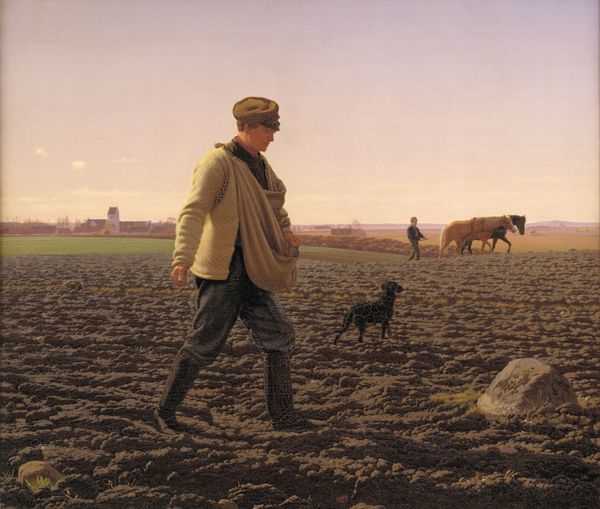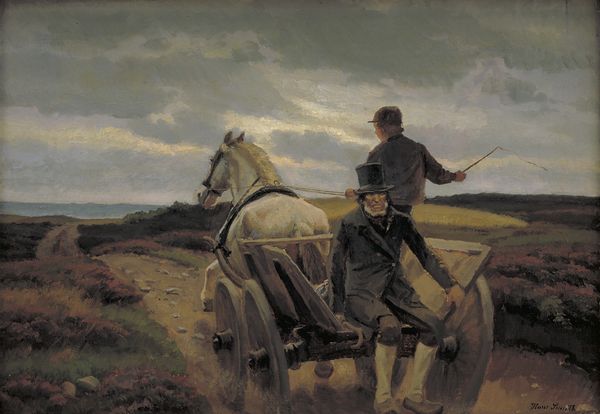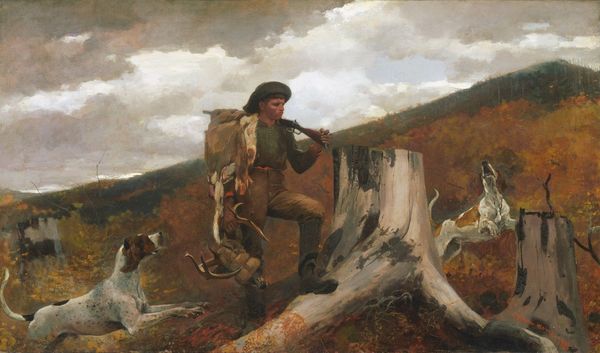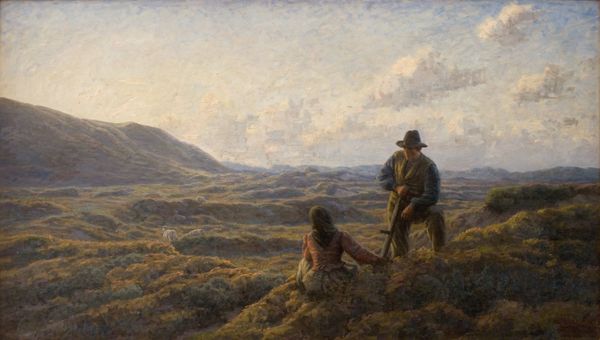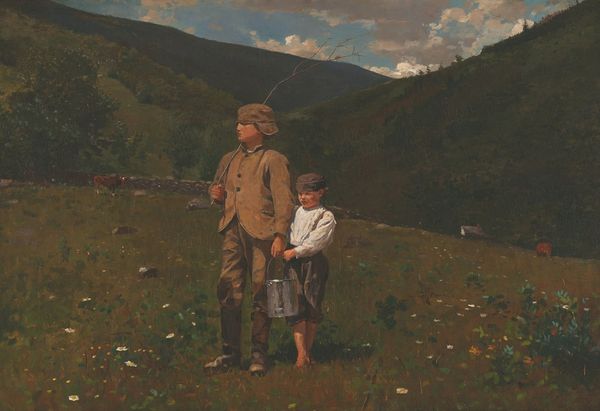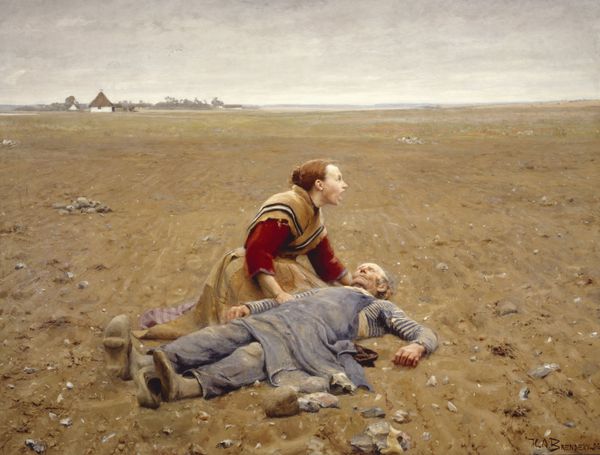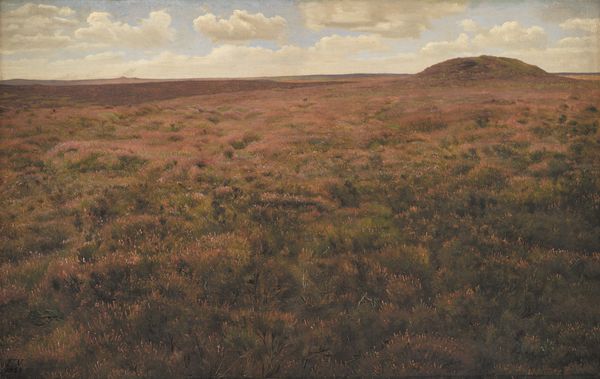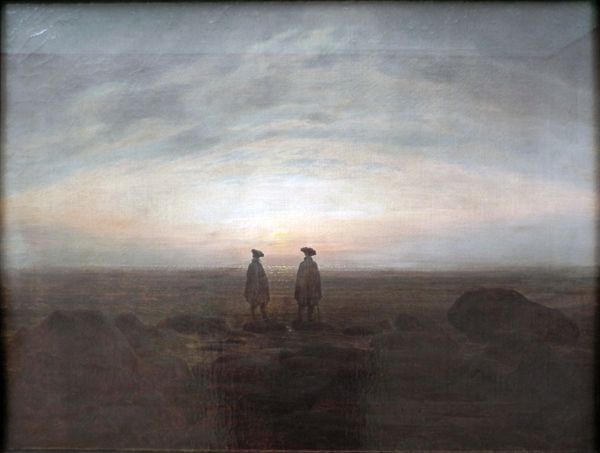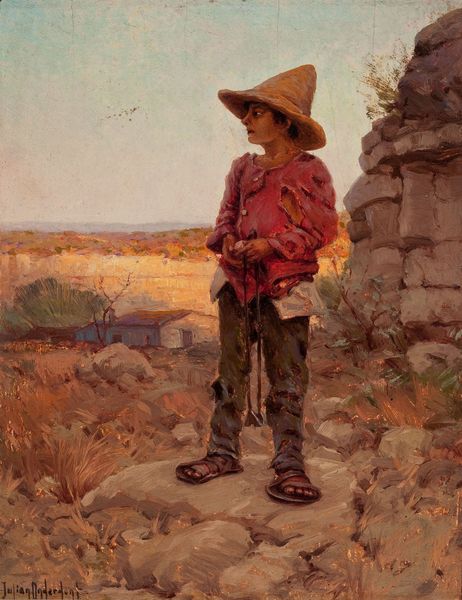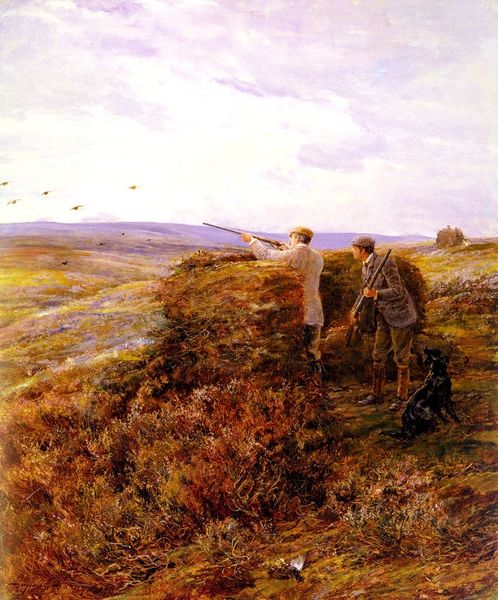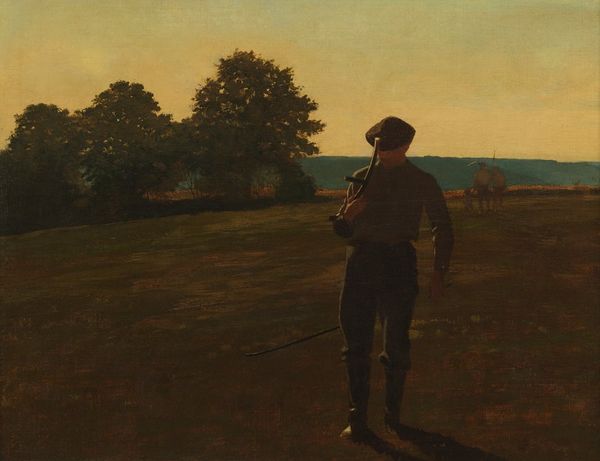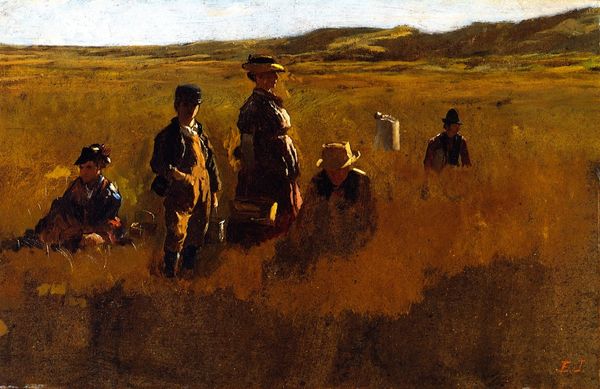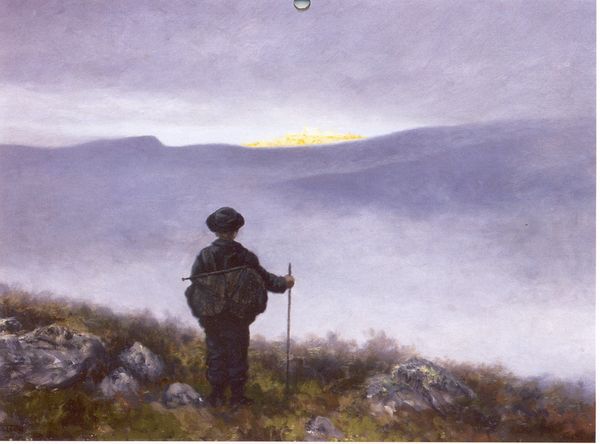
Dimensions: 59.5 cm (height) x 80 cm (width) (Netto), 95.1 cm (height) x 75.6 cm (width) x 7.5 cm (depth) (Brutto)
Editor: Here we have Frederik Vermehren's "A Jutland Shepherd on the Moors," painted in 1855, rendered with oil paint. The subdued palette makes me feel like I'm breathing in the stillness of the moors. What’s your take on this, putting yourself in Vermehren's boots? Curator: Oh, stepping into Vermehren's well-worn boots? I like that. For me, the subdued palette is exactly the point. Think about it: this is a moment in time, yes, but it’s also timeless. He's elevated this shepherd to a kind of Everyman. You see the detail in his weathered face, his practical clothes... it whispers stories of simple resilience against the starkness of Jutland. It reminds me of simpler days on my uncle’s sheep farm – perhaps the same winds blowing! What sort of tales does it evoke for you, looking closer? Editor: I guess it speaks to the romanticized view of rural life. Is it that simple though, or is there something else going on? Curator: Ah, there’s always "something else," isn’t there? Beyond the Romantic ideal, Vermehren’s a master of Realism here. He doesn't shy away from the inherent solitude. Look at the vastness behind the shepherd. The muted tones become almost symbolic, no? It is like a poem. But did this simple life have a stark undertone? Were Vermehren's strokes more a mirror, less a rose-tinted lens? Editor: It makes sense; less ideal and more raw in his realism. It now strikes me almost as a quiet act of honouring the life of the common person. Curator: Exactly. The quiet dignity. Maybe that's the timeless appeal? In honouring the simple life Vermehren offers a silent shout – a stark invitation to ponder life stripped bare; less grandeur, more earth. Has this journey on the moor changed how you'll greet the shepherd next time you visit? Editor: Absolutely! Next visit I am definitely bringing the 'boots of empathy!' Thanks so much for sharing this piece!
Comments
statensmuseumforkunst almost 2 years ago
⋮
In June of 1854 Frederik Vermehren met this 82-year-old shepherd on the Jutland moors. He wandered, knitting, among the flowering heather with his sheep, his only company the dog resting at his feet. Over the next few months this fortuitous encounter gave rise to one of the principal rural scenes in Danish art history. Man's affinity with nature Working his way through several pencil and painted studies, Vermehren slowly approached the final incarnation of the scene which is about much more than simply the old man on the moors. Taking the mundane scene as its point of departure, the picture before us is a rendition of man’s affinity with nature, of a simple life lived in harmony with nature and the God whose presence is felt in the grand landscape. A metaphysical dimension The picture’s feel of having a metaphysical dimension is largely the result of the intensified light, the endless landscape, and – more specifically – the barrows in the background. Eckersberg's view of art Within art history Vermehren is often referred to as a conservative guardian of the status quo. This is a consequence of the views he expressed during his many years as a professor, concluded with his retirement 1901: He unfailingly insisted on a view of art that originated with C. W. Eckersberg (1783-1853) in the beginning of the century. Thus, younger artists regarded him as a relic from days gone by. Back in the 1850s, however, Vermehren belonged to the progressive wing within Danish art and was one of the most active figures in the first rebellion against the Royal Danish Academy of Fine Arts’ resistance to change.
Join the conversation
Join millions of artists and users on Artera today and experience the ultimate creative platform.
